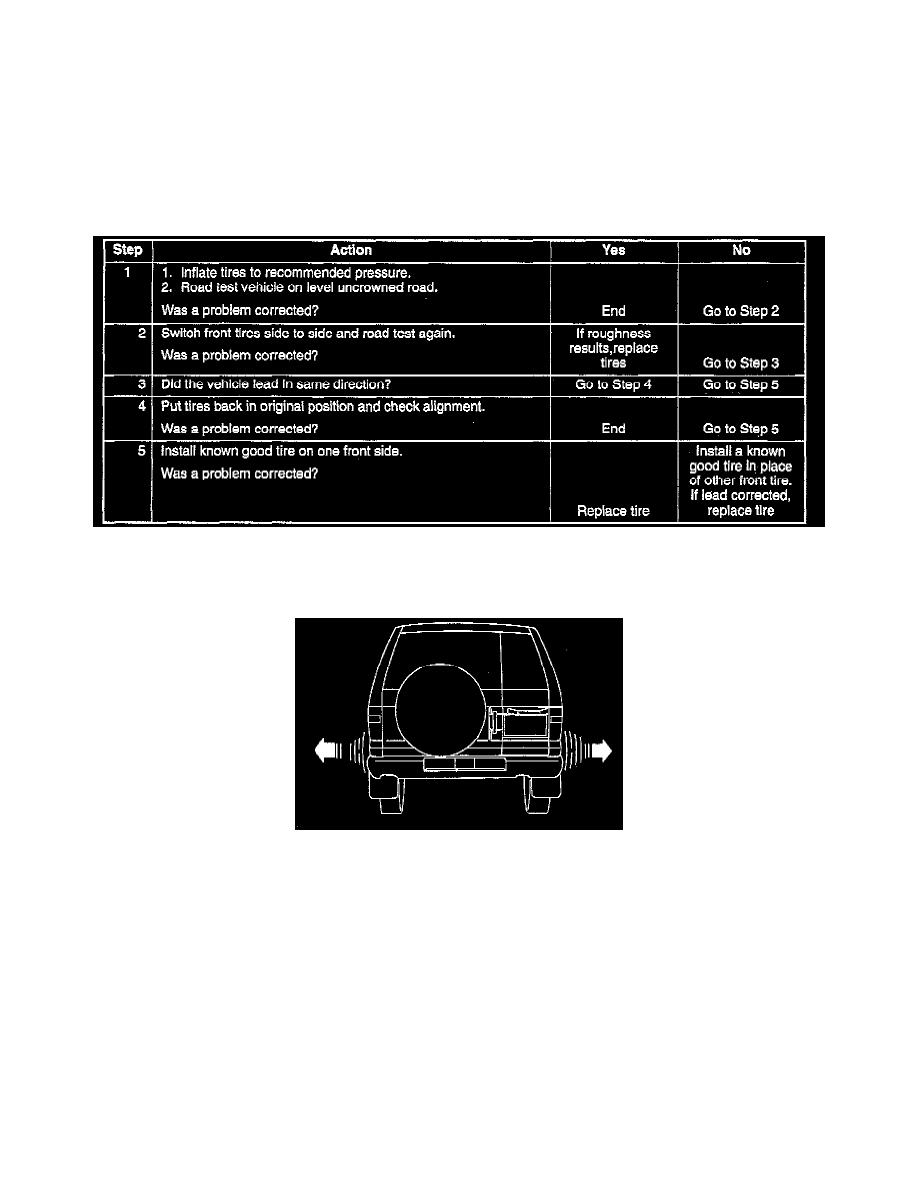Trooper LS V6-3.5L (1998)

"Lead/Pull" is vehicle deviation from a straight path, on a level road with no pressure on the steering wheel. Lead/Pull is usually caused by one or more
of the following:
1. Poorly manufactured radial tires.
2. Uneven brake adjustment.
3. Wheel alignment.
The way in which a tire is built can produce lead in a car. An example of this is placement of the belt. Off-center belts on radial tires can cause the tire to
develop a side force while rolling straight down the road and the tire will tend to roll like a cone.
The "Radial Tire Lead/Pull Correction" chart (below) should be used to make sure that front wheel alignment is not mistaken for tire lead.
NOTE: Rear tires will not cause lead/pull.
Lead/Pull Correction Chart
Radial Tire Waddle
Waddle is side-to-side movement at the front and/or rear of the car. It can be caused by the steel belt not being straight within the tire, or by excessive
lateral runout of the tire or wheel. It is most noticeable at low speed, about 8 to 48 km/h (5 to 30 mph). It may also cause rough ride at 80 to 113 km/h
(50 to 70 mph).
The car can be road tested to see which end of the car has the faulty tire. If the tire causing the waddle is on the rear, the rear end of the car will
"waddle". From the driver's seat, it feels as if someone is pushing on the side of the car.
If the faulty tire is on the front, the waddle is more easily seen. The front sheet metal appears to be moving back and forth. It feels as if the driver's seat is
the pivot point in the car.
Another more time-consuming method of determining the faulty tire is substituting tire and wheel assemblies that are known to be good. Follow these
steps:
1. Drive the car to determine if the waddle is coming from the front or rear.
2. Install tire and wheel assemblies known to be good (from a similar car) in place of those on the end of the car which is waddling. If the waddle
cannot be isolated to front or rear, start with the rear tires.
3. Road test again. If improvement is noted, install the original tire and wheel assemblies one at a time until the faulty tire is found. If no
improvement is noted, install tires known to be good in place of all four. Then, install the originals one at a time until the faulty tire is found.
Tread Wear Indicators
